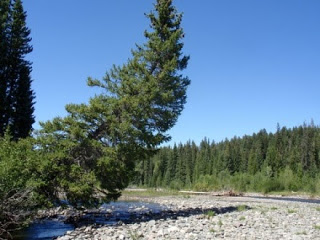
If a tree falls in the forest, and no one is around to hear it, does it make a sound?
Ah yes, a classic riddle indeed and one I will answer. No. It does not make a sound. Let's explore this, and how it relates to understanding pain and sensation.
First we will define a sound. The English Oxford dictionary defines it as "Vibrations that travel through the air or another medium and can be heard when they reach a person's or animal's ear." You need both waves and an ear to complete the "hear." So in our above riddle, there is no hear of the sound due to there being no person's ear in the riddle, as it is in the definition.
We will, naturally, argue that you need a brain too, but you can clearly see that sound is not just an output of vibration, it must be taken in and understood as sound.
If a nociceptor fires off an action potential, and there is no brain to synthesize it, does it make a pain? Again, physiology allows us to say No it does not 'make a pain.' (See Just an Action Potential) You need a receptor to complete the circuit. Team work.
Well isn't that a bit narcissistic and self-centered? Are you saying that things in the Universe do not exist until we perceive them to be so? I suppose our reality is indeed determined by our perception and the constant give-and-take of our environment and ourselves (See the Bio-chemico-physio-behavioro-environmento being) Sorry to say it is so. Just because when we feel pain, or hear a tree fall, and we can point to nociception and waves in air as the cause, does not always mean that those things cause pain or sound in all cases.
Regular readers of this blog are not surprised by this and neither are well-read Physios. "Nociception is neither sufficient nor necessary for pain."- Lorimer Moseley.
Many argue, in the aforementioned riddle, that since we know other trees to make sound, we know what a twig sounds like when it is snapped, and that since the waves were propagated and twigs snapped then "of course, you moron, the tree makes a sound."
... but it did not make a sound to the people who were not there to hear it.
So, just as a tree needs us to hear it as it falls for there to be a sound, peripheral inputs need a brain for them to be perceived, anticipated, understood. Neat.
-Matt Dancigers, DPT
Want an approach that enhances your existing evaluation and treatment? No commercial model gives you THE answer. You need an approach that blends the modern with the old school. Live cases, webinars, lectures, Q&A, hundreds of techniques and more! Check out Modern Manual Therapy!
Keeping it Eclectic...















Post a Comment
Post a Comment